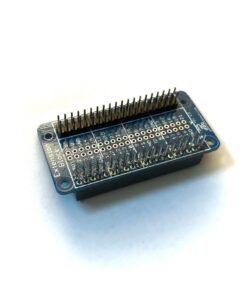-
×
 ExtensionBlock
1 × $ 12.52
ExtensionBlock
1 × $ 12.52
-
Search Results
-
I would like to know if there is any good tutorials for wireless DualShock4 controller (I have a bt dongle and running retropie 3.6) or do I just use it with the usb cord.
Hello all,
I am a bit desperate as I do not find any solution to my problem: after few minutes of game(2 to 20 minutes) my Raspberry is freezing (screen + ssh blocked : has to stop by unpluging the powe supply).
I tried almost everything I think:
=> change power supply (current : 3A)
=> change sd card (sandisk class 10 8 & 64 gb)
=> re-install several times Retropie 3.6 on my different cards
=> switch network from ethernet to wifi and vice & versa
=> it’s occuring on both my Raspberry pi 2 & 3 but more frequently on raspberry 3 it seems. mybe more playing supernes and megadrive (not sure)
=> I tried to put roms only on a usb keyNow to me it remains:
=> maybe configuration of the hdmi (where?)
=> bluetooth issue? I am using a ps3 pad via bluetooth.In conclusion my two raspberry are not usable…
Do you know this issue?Thanks in advance for your help!
Topic: sixad won't start at boot
Hi! New to RetroPie but these forums have been incredibly helpful already in getting me set up & going.
I am running RetroPie 3.6 on a Pi3.
I was struggling to get the cheap Bluetooth off-brand PS3 controllers I bought working with my config — I actually screwed something up and had to reimage the MicroSD card, but finally got it working, with one weird glitch. For some reason, the sixad service starts up, but fails with the following errors (from /var/log/sixad):
Can’t get device info: No such device
No bluetooth adapters found on the system!
sixad will now quitIf I *then* either ssh in or quit to the terminal prompt, and enter the following:
sudo /etc/init.d/sixad restartthe sixad process will start up just fine, and I can pair both controllers.
Is there some pi3 bluetooth service that needs to start up before sixad is run? How might I reorder them? (My Linux setup skills are extremely rusty :)
Note: To get these working, I used the “Clone support Shanwan” version under the “Install/pair PS3 controllers” menu in retropie_setup.sh — otherwise the devices wouldn’t pair. This was true even though when I connected them via USB, they appeared as “Gasia” controllers. I also had to install pi-bluetooth, of course, but that seemed to work fine.
Alright… so my Pi keeps freezing/hanging whenever I’m playing a SNES game. I just installed it using BerryBoot so I could have a larger repository for ROMs.
My setup is as follows
Pi3->Plugable Powered USB hub-> Vertex 500GB SSD.
Has anyone else had any issues with the newest berryboot version? If so how’d y’all fix it?
Topic: Desperate help needed!!
Hello everyone and thanks for a great forum….. I am in need of help and have trawled forums/websites for several weeks but cant seem to find a solution. I have purchased a pi2 enabled arcade cabinet which has two joysticks and 3 buttons per player. It is running retropie 3.2 ( I think ). My problem is that the controls work fine for MAME and Fba but I am unable to use the Nintendo or Sega emulators as the keybindings are all over the place. eg on Nintendo the LH joystick works but the buttons for the game are split between player 1 and player 2 buttons, also I am unable to exit the emulator and have to power cycle the pi to quit. The controls are wired to an ipac 2 which then goes into the pi by usb. I have read soooo much I am now officially confused and would love any guidance to sort this issue out. many Thanks in advance.
Topic: Boot from SSD (PiDrive)?
I have a piDrive on a rPI3:
https://www.kickstarter.com/projects/2073955313/pidrive-low-power-msata-ssd-for-the-raspberry-piand have followed the steps at:
http://www.mictronics.de/2016/03/install-and-run-an-existing-image-from-pidrive/3/To try and make the retropie image boot directly from the hard drive, but the resizing script just ran forever (4hours until I killed it)
After rebooting I see the retropie boot screen, but after that I’m thrown to a prompt.
df shows the following:
Filesystem 1K-blocks Used Available Use% Mounted on /dev/root 2371536 2284240 0 100% / devtmpfs 372268 0 372268 0% /dev tmpfs 376588 0 376588 0% /dev/shm tmpfs 376588 5296 371292 2% /run tmpfs 5120 4 5116 1% /run/lock tmpfs 376588 0 376588 0% /sys/fs/cgroup /dev/mmcblk0p1 129776 21046 108730 17% /boot /dev/sda1 58234 19952 38282 35% /media/usb1I’m hoping someone may be able to help me figure out how to get this working?